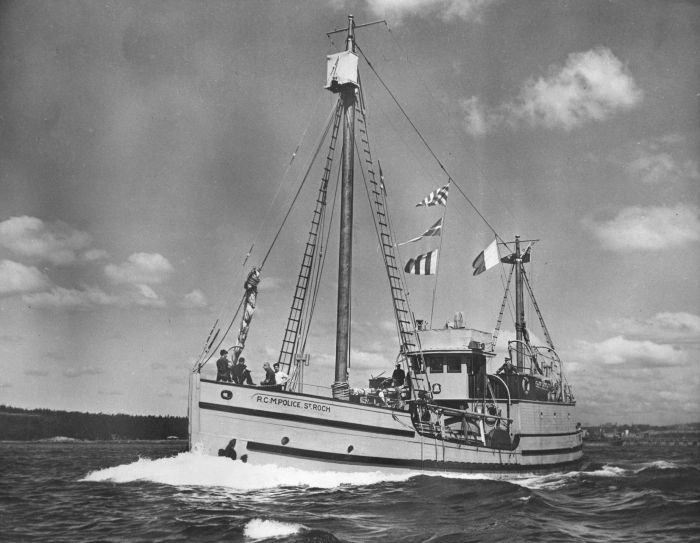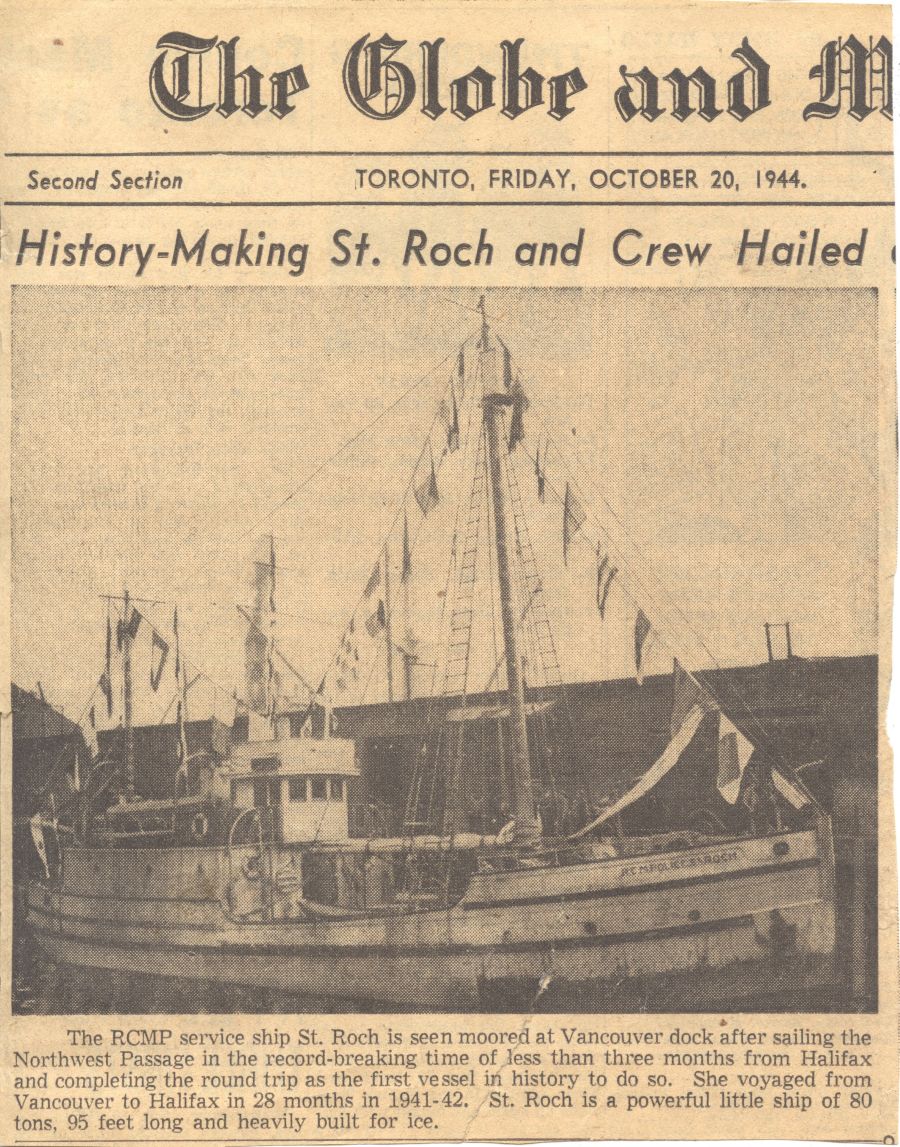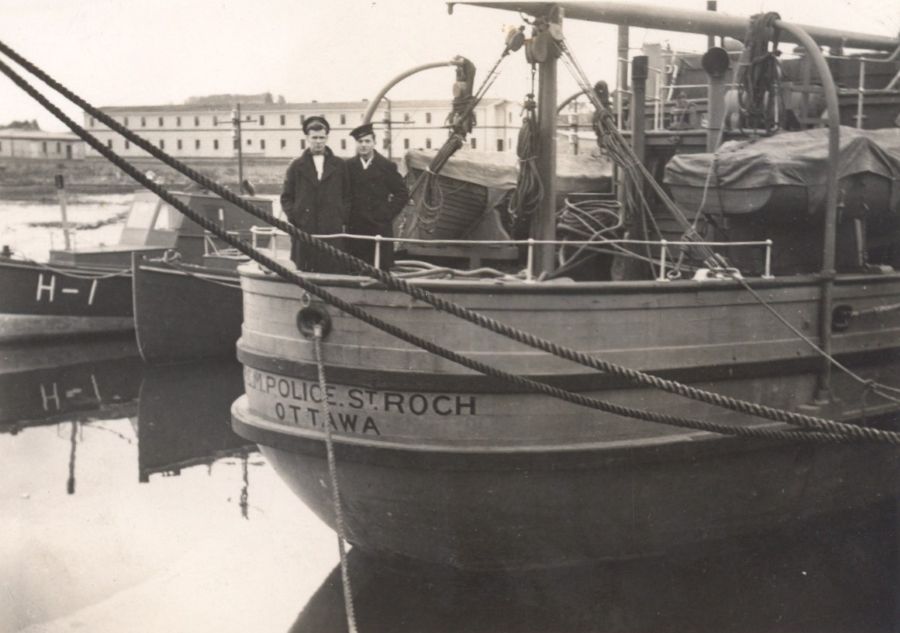|
RCMP Vessel ST ROCH
Arctic Supply and Patrol Vessel
St. Roch was made primarily of thick Douglas fir, with very hard Australian "ironbark" eucalyptus on the outside, and an interior hull reinforced with heavy beams to withstand ice pressure during her Arctic duties. St. Roch was designed by Tom Halliday and was based on Roald Amundsen's ship Maud.
St. Roch was constructed in 1928 at the Burrard Dry Dock Shipyards in North Vancouver. Between 1929 and 1939 she supplied and patrolled Canada's Arctic.
In
1940-1942 she became the first vessel to complete a voyage through the
Northwest Passage in a west to east direction, and in 1944 became the first
vessel to make a return trip through the Northwest Passage, traversing the
more northerly route considered the true Northwest Passage, and was also the
first to navigate the passage in a single season. Between 1944 and 1948 she
again patrolled Arctic waters. On May 29, 1950, she became the first vessel
to circumnavigate North America, travelling from Halifax, Nova Scotia, to
Vancouver via the Panama Canal. In all she made three arctic voyages.
In 1954, the St. Roch was decommissioned in Halifax and returned to Vancouver. In 1958, she was placed in dry dock at Kitsilano Point for restoration, partly inspiring the location of the planned Vancouver Maritime Museum, which opened the following year. In 1962, St. Roch was designated a National Historic Site of Canada. Although the ship was placed indoors in an A-frame building adjoining the museum, it remained formally under the control of Parks Canada. In 1995 Parks Canada handed over full control of the St. Roch to the museum. (Source: Wikipedia)
The St. Roch took three seasons from 1940 to 1942 to make a Northwest Passage transit. Under the command of Skipper Henry Larsen, St. Roch sailed from west to east, in the opposite direct from Amundsen and the Gjoa. The St. Roch had several unique capabilities, including an egg-shaped, two-foot thick, ice-strengthened hull and room on her decks for several dog teams. Heavy ice conditions forced Larsen to winter at Cambridge Bay on Victoria Island. Freed from the ice in Jul 1941, Larsen eventually sailed to Gjoa Haven on King William Island and continued eastward against thickening ice. Trapped at Pasley Bay, St. Roch grounded on a submerged shoal and barely escaped being crushed. Reaching the Bellot Strait in the summer of 1942, St. Roch was nearly crushed by ice racing through the strait. the St. Roch reached Halifax in Oct. 1942. In 1944, sailing east to west, Larsen, navigating St. Roch on a more northerly course, reached Vancouver in three months. (Source: Across the Top of the World - USCG Northwest Passage by Senior Chief Petty Officer P. J. Capelotti, PhD, USCGR)
They shall not be forgotten
Article on St. Roch transiting the North West Passage in under 3 months // The Globe and Mail 20 Oct 1944 From the collection of Ross (Sandy) Somerville, Leading Coder, RCNVR
Sailors off HMCS QUINTE on the quarterdeck of the RCMP vessel St. Roch at Lunenburg, NS. The buildings of Camp Norway are in the background From the collection of Ross (Sandy) Somerville, Leading Coder, RCNVR
|




